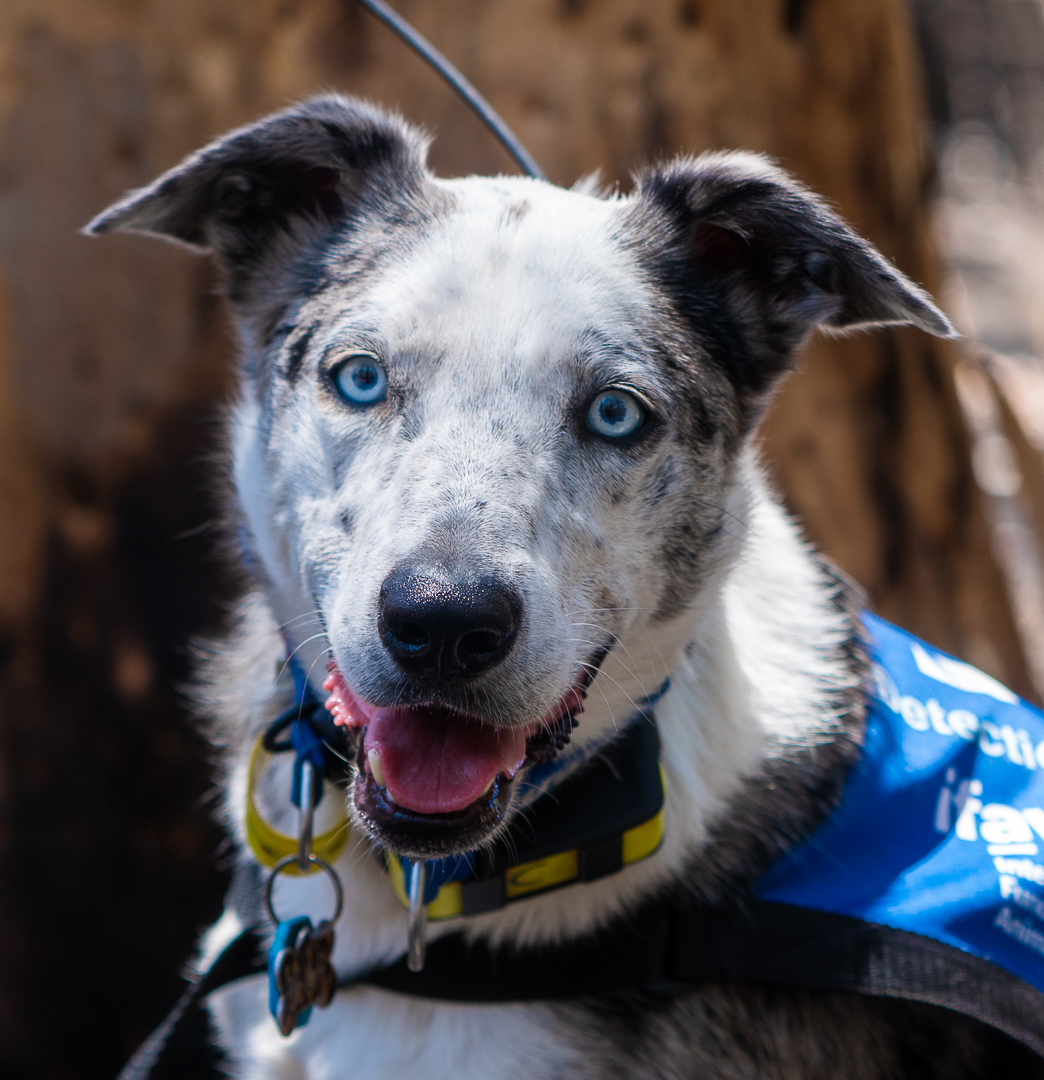Josey Sharrad
latest recruit learning how to detect koalas
latest recruit learning how to detect koalas

Bear, a one-year-old Border Collie/Koolie cross with strikingly intent light blue eyes. Like many he originally came from a pet shop and like all dogs he hoped he’d found his forever home. Because he is super high energy, and slightly obsessive, it turned out that he wasn’t the perfect family pet after all.
But these qualities do make him a perfect candidate for a koala detection dog.
Koalas are elusive creatures and difficult to detect with the human eye as they spend much of their lives asleep high up in trees, camouflaged.
This is a particular challenge when it becomes necessary to spot them prior to land clearing and plantation logging. Human spotters often miss them, which often leads to them being injured or killed.
But dogs, if trained properly, can detect them so they can be rescued.
Last week I visited trainer Sarah Fyffe at her property near Brisbane to check in on Bear’s progress.
Bear has passed all the preliminary tests with flying colours and is showing all the signs of being a brilliant koala detection dog. But he has to pass all the stages of his stringent training and Sarah is putting him through his paces!
Sarah definitely has her work cut out for her. Training a detection dog is extremely demanding physically and mentally, for both the dog and the trainer. In the field, many split second decisions must be made in a complex and dynamic environment and there is no room for error.
Bear is highly focused and brilliant at focusing on one thing – which makes him perfectly suited for the job. He also has zero prey drive which is essential for a wildlife detection dog as they need to focus purely on the scent and not the animal, ultimately ignoring the animal when they follow the scent to its destination.
A dog’s ability to smell is believed to be between 1,000 and 10,000 times better than a human's. The koala scent is sourced from fur from koalas at the Australia Zoo, and Sarah uses the fur to hide scent in testing areas around her property. Sarah is now using a device to launch scent up in the trees to emulate a koala’s natural position and Bear is successfully locating odour at around a 15-20 ft. height.
When Bear successfully tracks the scent he is rewarded with a ball. The ball is Bear’s world – it is his ball and he gets it whenever he finds the scent source. Importantly, there is no punishment in detection dog training – just guidance. Sarah lets the dogs find their own way without suppressing their natural instincts.
The training of the handlers is also vital, which Sarah will be doing in the coming weeks. The handler is key. The pair have to have a special relationship and understanding and be able to work together and communicate in often challenging situations in total synergy. It’s a constantly evolving journey of learning on all sides.
This initiative by the University of the Sunshine Coast, with whom IFAW is partnering, is a highly challenging and ground-breaking one.
Bear’s transition into the field will be the make-or-break and will determine whether he will make the grade. Watch this space.
--Josey Sharrad
UPDATE: Previous recruits Archie and Billie, mentioned in our previous blog on this topic, “Sniffing out koalas to protect them from harm,” unfortunately didn’t make the grade but have successfully been placed in their forever homes by the University.
Related content
Our work can’t get done without you. Please give what you can to help animals thrive.